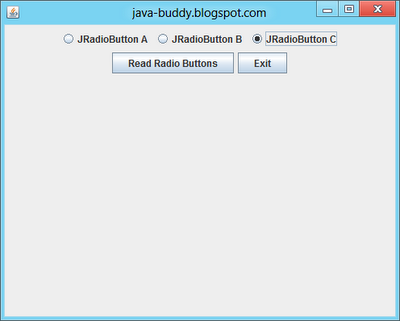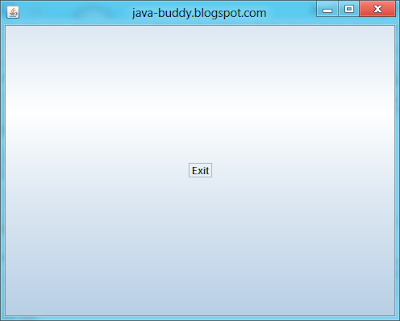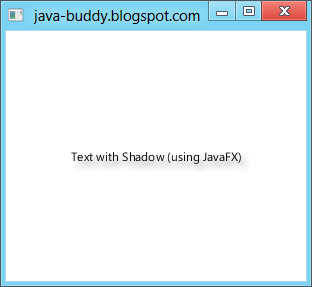Where type can be:
- Type.NORMAL: Represents a normal window. This is the default type for objects of the Window class or its descendants. Use this type for regular top-level windows.
- Type.POPUP: Represents a popup window. A popup window is a temporary window such as a drop-down menu or a tooltip. On some platforms, windows of that type may be forcibly made undecorated even if they are instances of the Frame or Dialog class, and have decorations enabled.
- Type.UTILITY: Represents a utility window. A utility window is usually a small window such as a toolbar or a palette. The native system may render the window with smaller title-bar if the window is either a Frame or a Dialog object, and if it has its decorations enabled.
Example:
- Create a new Java project of Java application, with main code named JavaTestSwing.java and JFrameWin.java extends javax.swing.JFrame.
package javatestswing;
import java.awt.event.ActionEvent;
import java.awt.event.ActionListener;
import javax.swing.Box;
import javax.swing.ButtonGroup;
import javax.swing.JButton;
import javax.swing.JFrame;
import javax.swing.JPanel;
import javax.swing.JRadioButton;
/**
*
* @web http://java-buddy.blogspot.com/
*/
public class JFrameWin extends JFrame{
public JFrameWin(){
final JPanel jPanel = new JPanel();
this.setTitle("java-buddy.blogspot.com");
this.setSize(500, 400);
this.setDefaultCloseOperation(JFrame.EXIT_ON_CLOSE);
JButton buttonExit = new JButton(" Exit ");
buttonExit.addActionListener(new ActionListener(){
@Override
public void actionPerformed(ActionEvent ae) {
System.exit(0);
}
});
final JRadioButton jRadioButtonA = new JRadioButton("NORMAL");
final JRadioButton jRadioButtonB = new JRadioButton("POPUP");
final JRadioButton jRadioButtonC = new JRadioButton("UTILITY");
ActionListener radioButtonActionListener = new ActionListener() {
@Override
public void actionPerformed(ActionEvent ae) {
String cmd = ae.getActionCommand();
JFrame newFrame =new JFrame();
newFrame.setDefaultCloseOperation(JFrame.DISPOSE_ON_CLOSE);
newFrame.setSize(300,200);
newFrame.setTitle(cmd);
if(cmd == "NORMAL"){
newFrame.setType(Type.NORMAL);
}else if(cmd == "POPUP"){
newFrame.setType(Type.POPUP);
}else if(cmd == "UTILITY"){
newFrame.setType(Type.UTILITY);
}
newFrame.setVisible(true);
}
};
jRadioButtonA.addActionListener(radioButtonActionListener);
jRadioButtonB.addActionListener(radioButtonActionListener);
jRadioButtonC.addActionListener(radioButtonActionListener);
ButtonGroup buttonGroup = new ButtonGroup();
buttonGroup.add(jRadioButtonA);
buttonGroup.add(jRadioButtonB);
buttonGroup.add(jRadioButtonC);
Box verticalBox = Box.createVerticalBox();
verticalBox.add(jRadioButtonA);
verticalBox.add(jRadioButtonB);
verticalBox.add(jRadioButtonC);
jPanel.add(verticalBox);
jPanel.add(buttonExit);
this.add(jPanel);
}
}













